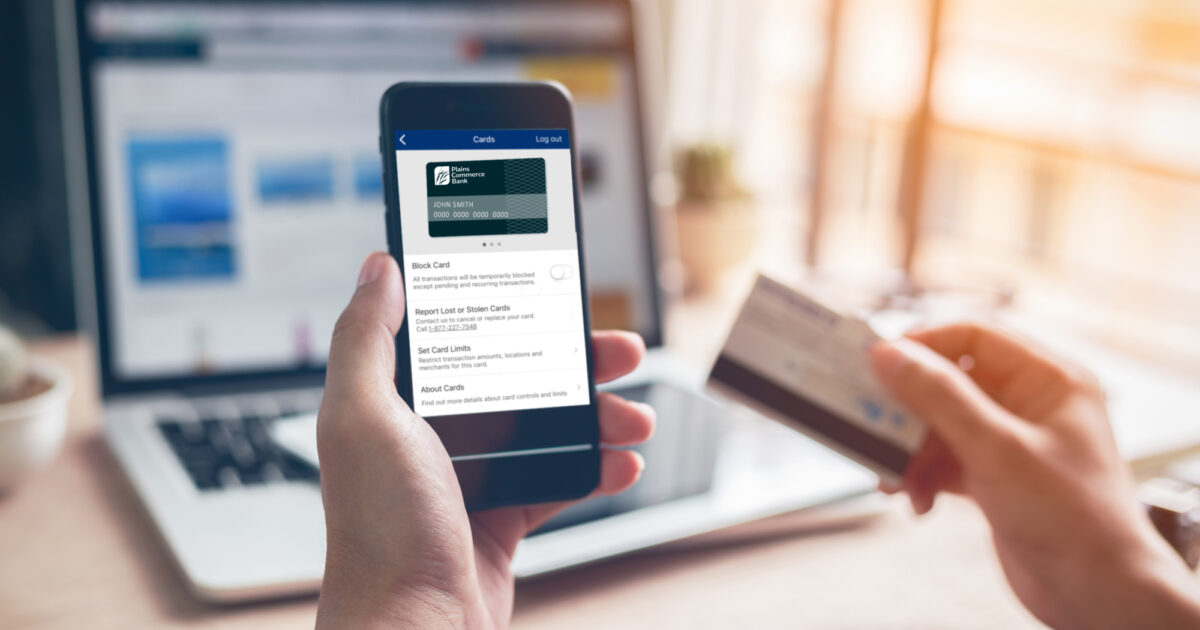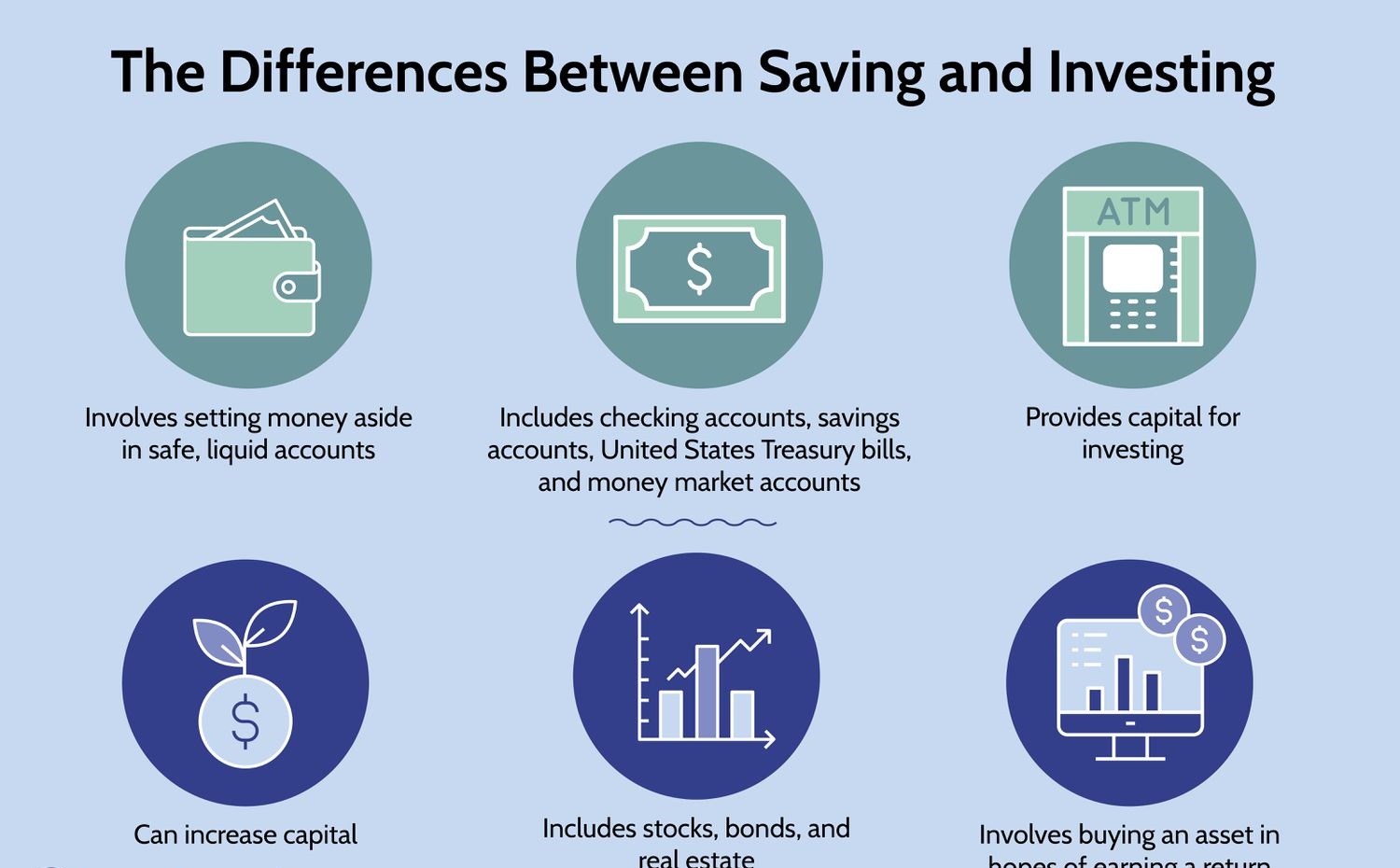Introduction
Mobile banking, the ability to access and manage financial accounts using a mobile device, has gained tremendous popularity in recent years. With the convenience and accessibility it offers, mobile banking has become a convenient alternative to traditional online banking. However, despite its advantages, mobile banking is often considered riskier than online banking due to several factors.
Mobile banking allows users to perform various banking transactions, such as checking account balances, transferring funds, paying bills, and even applying for loans, all from the palm of their hand. This level of convenience has revolutionized the way people manage their finances, eliminating the need to visit physical branches or sit down at a computer.
However, this convenience comes with its own set of risks. Mobile devices, such as smartphones and tablets, are more vulnerable to theft and fraud compared to desktop computers or laptops. Moreover, the limited screen size and user interface challenges on mobile devices can make it easier for users to fall prey to malicious apps and phishing scams.
In this article, we will explore why mobile banking is considered riskier than online banking. We will delve into the factors that contribute to this perception, including increased vulnerability to theft and fraud, the risk of malicious apps and phishing scams, as well as the challenges posed by limited screen size and user interface.
Overall, while mobile banking offers unparalleled convenience, it is essential for users to be aware of the inherent risks associated with it. By understanding the potential pitfalls and implementing necessary security measures, individuals can protect themselves while enjoying the benefits of mobile banking.
Convenience and Accessibility
One of the primary reasons mobile banking has gained immense popularity is its convenience and accessibility. With just a few taps on a smartphone or tablet, users can quickly access their bank accounts, check balances, and conduct various financial transactions. The ability to bank on-the-go has revolutionized the way people approach their personal finances.
Mobile banking eliminates the need to visit physical bank branches or sit down at a desktop computer to manage finances. This convenience allows users to access their accounts whenever and wherever they want, providing a greater level of flexibility and control over their money. Whether it’s transferring funds to pay bills, making purchases, or keeping track of transactions, mobile banking offers a seamless and efficient experience.
Furthermore, mobile banking apps are designed to provide a user-friendly interface, making it easy for individuals of all ages and technological proficiency to navigate through their accounts. Transactions can be completed with just a few taps and swipes, eliminating the need for complicated processes or lengthy forms. The simplicity of mobile banking apps enhances the overall customer experience, ensuring that managing finances is a hassle-free task.
Additionally, mobile banking apps often come equipped with innovative features that further enhance convenience. For example, some apps allow users to deposit checks remotely by simply taking a picture of the check. This eliminates the need to visit a branch or ATM, saving time and effort.
However, while the convenience and accessibility of mobile banking are undoubtedly appealing, it is important to understand that these benefits come with certain risks. The very factors that make mobile banking so convenient also make it riskier compared to traditional online banking methods.
In the following sections, we will explore these risks in detail and discuss the steps users can take to mitigate them. By understanding the vulnerabilities associated with mobile banking and adopting best practices for security, individuals can continue to enjoy the convenience while minimizing the potential risks.
Increased Vulnerability to Theft and Fraud
One of the major concerns with mobile banking is the increased vulnerability to theft and fraud. While mobile devices offer convenience and portability, they also present a higher risk compared to traditional online banking methods.
One common risk is the physical theft or loss of a mobile device. Smartphones and tablets are easily misplaced, lost, or stolen, making them potential targets for criminals. If an unauthorized person gains access to a user’s mobile device, they may be able to access sensitive financial information stored in banking apps or even perform fraudulent transactions.
In addition to the risk of physical theft, there is also the threat of cybercriminals targeting mobile devices. Mobile operating systems and apps may have vulnerabilities that can be exploited by hackers, allowing them to gain unauthorized access to a user’s financial data. These cybercriminals may use various tactics, such as malware, phishing attacks, or even fake banking apps, to trick users into revealing their login credentials or other sensitive information.
Moreover, the smaller screen size and user interface limitations on mobile devices can make it more difficult for users to identify potential security threats. Phishing scams, where attackers impersonate legitimate financial institutions to deceive users, can be harder to spot on a small screen compared to a desktop computer. This can increase the likelihood of unwittingly sharing login credentials or personal information with scammers.
To mitigate the risks associated with increased vulnerability to theft and fraud in mobile banking, users can take several proactive steps. Firstly, they should always enable strong passcodes or biometric authentication options on their mobile devices to protect against unauthorized access in case of loss or theft.
It is also crucial to keep mobile operating systems and banking apps up to date, as developers regularly release security patches and updates to address vulnerabilities. Users should refrain from downloading apps or clicking on links from unknown sources, as these could contain malware or lead to fake banking websites designed to steal personal information.
Furthermore, individuals should practice caution and vigilance while using mobile banking apps. They should avoid conducting financial transactions on public Wi-Fi networks, as these networks may not be adequately secured and could expose sensitive information. It is advisable to use secure and trusted networks or consider using a Virtual Private Network (VPN) for added protection.
By being aware of the increased vulnerability to theft and fraud in mobile banking and implementing these security measures, users can mitigate the risks and protect their financial information from unauthorized access and fraudulent activities.
Mobile Devices Are Easier to Lose or Steal
One of the prominent risks associated with mobile banking is the increased likelihood of losing or having a mobile device stolen. Unlike traditional online banking methods that primarily rely on computers, mobile banking heavily relies on smartphones and tablets, which are inherently more susceptible to loss or theft.
Due to their portable nature, mobile devices are frequently carried around by users in various settings such as public transportation, restaurants, shopping centers, and more. Unfortunately, this portability also increases the chances of misplacing or forgetting the mobile device, making it much easier for unauthorized individuals to gain access to sensitive banking information.
Mobile devices are also appealing targets for thieves due to their high resale value and the potential wealth of personal and financial information they contain. Whether it’s left unattended on a coffee shop table or snatched from someone’s hand on the street, the loss of a mobile device poses significant risks to the security of one’s mobile banking accounts.
Once an unauthorized individual gains possession of a mobile device, they can potentially access any banking apps or saved login credentials, thereby gaining access to the user’s financial accounts. This unauthorized access can lead to fraudulent transactions, identity theft, and compromise of sensitive personal information.
To minimize the risk of losing or having a mobile device stolen, users should follow some best practices:
- Keep the mobile device secure by setting a strong passcode, PIN, or using biometric authentication such as fingerprint or facial recognition.
- Avoid leaving the mobile device unattended in public places or within easy reach of others.
- Regularly back up important data, such as banking app login information, on cloud storage or a secure external storage device to prevent total loss of information in the event of theft or loss.
In addition to these preventive measures, users can also take advantage of built-in features offered by both mobile devices and mobile banking apps. For instance, some devices offer remote tracking and locking capabilities that allow users to locate their device and remotely wipe its data if necessary.
By maintaining awareness of the increased risk of losing or having a mobile device stolen, and by implementing these measures, users can protect themselves from unauthorized access to their mobile banking accounts and safeguard their valuable personal and financial information.
Risk of Malicious Apps and Phishing Scams
When it comes to mobile banking, one of the significant risks that users face is the potential for encountering malicious apps and falling victim to phishing scams. The rapid growth of the mobile app ecosystem has opened the door for cybercriminals to exploit unsuspecting users.
Malicious apps, often disguised as legitimate banking apps, pose a significant threat to mobile banking security. These apps are designed to trick users into disclosing their login credentials and other sensitive information. Once installed on a user’s device, these apps can gain unauthorized access to personal data, banking details, and even intercept two-factor authentication codes.
Phishing scams, on the other hand, involve cybercriminals posing as legitimate financial institutions or service providers to deceive users. They often employ tactics such as sending fake emails, text messages, or creating fraudulent websites that closely resemble official banking portals. The aim is to trick users into disclosing their login credentials, passwords, or other personal information.
Mobile users are particularly vulnerable to these scams due to the limited screen size and user interface challenges. This makes it harder for users to recognize suspicious links or fake login pages, increasing the likelihood of falling victim to phishing attacks.
To protect themselves from malicious apps and phishing scams, mobile banking users should take several precautions:
- Download apps only from trusted sources such as official app stores.
- Read reviews and check the ratings of banking apps before downloading.
- Verify the legitimacy of banking apps by cross-referencing the official website.
- Avoid clicking on links or downloading attachments from unknown sources, especially in unsolicited emails or text messages.
- Double-check the URL of banking websites to ensure they are secure, using HTTPS.
- Be cautious when entering personal or financial information and only do so on secure websites.
- Regularly update mobile devices and apps to ensure the latest security features are in place.
Moreover, it is crucial to educate ourselves about common phishing tactics and stay vigilant against potential scams. Banks and financial institutions also play a vital role in protecting customers by regularly updating security protocols and providing educational resources on safe mobile banking practices.
By being aware of the risks associated with malicious apps and phishing scams and taking appropriate precautions, mobile banking users can safeguard their personal and financial information while enjoying the convenience of mobile banking.
Limited Screen Size and User Interface Challenges
One of the challenges faced by mobile banking users is the limited screen size and user interface constraints of mobile devices. While smartphones and tablets provide convenience, their smaller screens can make it more difficult to navigate and interact with banking applications compared to traditional online banking on larger desktop or laptop screens.
The restricted screen real estate can result in cramped layouts and smaller text sizes, potentially causing users to struggle with reading account information or inputting data accurately. This can lead to errors or misunderstandings, which may have significant implications in financial transactions.
The smaller screen size also poses challenges when it comes to displaying complex financial data such as detailed transaction history, investment portfolios, or mortgage calculations. Users may find it challenging to access and analyze comprehensive information on their mobile devices, limiting their ability to make informed financial decisions.
User interface challenges are further amplified by the touch-based nature of mobile devices. Accidental touches, gestures, and input errors can occur more frequently due to the smaller screen size and lack of physical keyboards. Users may unintentionally tap on incorrect buttons or enter incorrect data, potentially leading to financial errors or compromising security.
Moreover, the user interface of mobile banking apps may not always be intuitive, and users may struggle to locate specific features or navigate through multiple layers of menus. This can result in frustration, decreased efficiency, and the risk of making incorrect transactions.
To overcome these challenges, mobile banking app developers strive to create user-friendly interfaces that cater to the unique constraints of mobile devices. This includes designing clear and intuitive layouts, using larger fonts and buttons, and simplifying navigation to enhance usability.
Furthermore, mobile banking users can take steps to ease these limitations:
- Take advantage of accessibility features on mobile devices, such as magnification gestures or voice commands, to improve visibility and ease of interaction.
- Ensure that the banking app being used is specifically designed for mobile devices and supports responsive design, adapting to different screen sizes and orientations.
- Utilize banking apps with customizable settings, allowing users to personalize the display and layout to suit their preferences and accommodate any visual impairments.
Despite the challenges posed by limited screen size and user interface constraints, mobile banking continues to evolve, and advancements in technology are enabling better user experiences. As mobile devices become more powerful and screens become larger and more high-resolution, the usability and functionality of mobile banking apps are improving, enhancing the overall mobile banking experience for users.
Inadequate Security Measures on Mobile Devices
While mobile banking offers convenience and accessibility, one of the concerns surrounding its use is the existence of inadequate security measures on mobile devices. Compared to traditional computers, mobile devices often face greater challenges in terms of security vulnerabilities and protection against cyber threats.
Mobile operating systems, such as iOS and Android, have built-in security features to safeguard user data. However, they are not foolproof and can still have vulnerabilities that may be exploited by hackers and malicious actors. Moreover, the vast number of different devices and versions of operating systems in the mobile ecosystem make it challenging to maintain a consistent level of security across all devices.
One key security concern is the lack of regular software updates on mobile devices. Users often delay or neglect updating their operating systems or apps, which can leave critical security patches uninstalled. This creates opportunities for cybercriminals to exploit known vulnerabilities and gain unauthorized access to sensitive information on the device.
Another security vulnerability is the susceptibility of mobile devices to malware and other malicious software. Users may inadvertently download and install infected apps or click on malicious links, putting their personal and financial data at risk. These malicious programs can collect user information, intercept banking credentials, or even gain control of the device, compromising the security of mobile banking applications.
Furthermore, some mobile devices may lack necessary security features such as secure hardware components or robust encryption protocols. This can make it easier for attackers to bypass device security, extract data, or intercept communication between the device and banking servers.
Mobile users can take several precautions to mitigate the risks associated with inadequate security measures:
- Regularly update the operating system and all installed apps to ensure the latest security patches are installed.
- Only download apps from trusted sources, such as official app stores, and be mindful of the app’s permissions before granting access to sensitive data.
- Install reputable mobile security apps that can scan for malware and provide additional protection against threats.
- Use strong and unique passwords or passcodes for device access and banking applications.
- Enable two-factor authentication when available to add an extra layer of security to mobile banking login.
It is crucial for mobile device manufacturers, app developers, and operating system providers to continually improve security measures to address the evolving threat landscape. Likewise, financial institutions should stay vigilant in adopting the latest security protocols and technologies to protect their customers’ financial information and transactions.
By actively implementing security practices and staying informed about the latest security updates, mobile banking users can enhance the security of their devices and minimize the risk of unauthorized access or data breaches.
Conclusion
Mobile banking offers unparalleled convenience and accessibility, allowing users to manage their finances on the go. However, it is important to acknowledge the risks associated with mobile banking and take necessary precautions to ensure the security of personal and financial information.
Throughout this article, we have discussed the reasons why mobile banking is considered riskier than traditional online banking. We explored how the convenience and accessibility of mobile banking can lead to increased vulnerability to theft and fraud. We also recognized the risks posed by malicious apps and phishing scams, as well as the challenges presented by limited screen size and user interface constraints. Additionally, the inadequate security measures on mobile devices highlight the need for users to be proactive in protecting their financial data.
To mitigate these risks, users should follow best practices such as enabling strong passcodes or biometric authentication, regularly updating their devices and apps, and being cautious of downloading apps from trusted sources. It is also important to be vigilant against phishing scams and to educate ourselves about common tactics used by cybercriminals.
Financial institutions should continue to enhance the security measures in place to protect their mobile banking customers. This includes adopting advanced authentication methods, regularly updating security protocols, and providing educational resources to raise awareness about potential risks and prevention techniques.
By understanding the risks associated with mobile banking and implementing appropriate security measures, individuals can enjoy the convenience and flexibility of mobile banking while minimizing the potential risks to their personal and financial information.
Ultimately, mobile banking can be a safe and secure platform when users remain vigilant, educated, and take proactive steps to ensure their security. With proper precautions, individuals can confidently embrace the convenience and accessibility that mobile banking offers, empowering them to manage their finances efficiently and effectively.

























